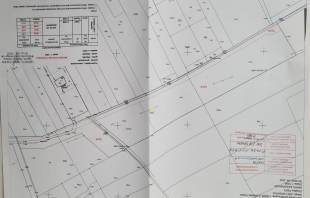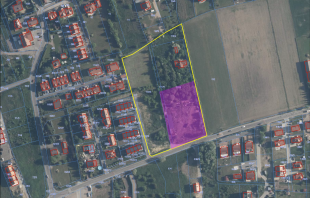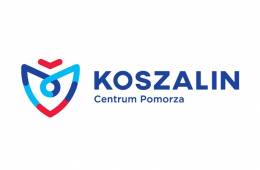All of Poland has become an economic zone thanks to the act on supporting new investments. The new rules are to help encourage investments in less developed regions of the country and make it easier for small and medium-sized enterprises to invest.
When in 1994, Special Economic Zones were established, they were supposed to be a response to e.g. problems with the development of post-industrial areas and former state-owned farms. Thanks to income tax exemptions, they attracted investments to regions with high unemployment rates. With time, attractive infrastructure and other forms of support such as cluster structures or development centres were also created in the zones. However, for a long time there have been voices that the investment support system, including SEZs, should be transformed.
– The law ceased to keep up with the changing economic situation of the country and the world, which resulted, e.g. in regional divisions. Territorial limitations forced businesses and administrations into procedures lasting for months, which often caused the businesses to withdraw. The tax exemptions were granted for as long as the zones were to function, and that period was extended twice. This has diminished Poland’s investment competitiveness on the international arena, – says Jadwiga Emilewicz, Minister of Entrepreneurship and Technology.
The investor will receive tax incentives regardless of location
The law, which entered into force at the end of June 2018, introduces several new solutions. Until now, an investor wishing to receive special income tax exemptions had to invest in one of 14 special economic zones, occupying about 0.08 % of the territory of Poland.
– After the amendments enter into force, tax incentives will be available throughout Poland, in areas where you can do business, – explains Tadeusz Kościński, Deputy Minister of Entrepreneurship and Technology.
The legislator assumes that this will allow e.g. to start another investment near the previous one without the need to include new areas in the zone, which could take up to 20 months. This is to encourage especially Polish businesses to reinvest.
The second novelty will be a specified investment deadline. Until now, investors were limited by the period of operation of the SEZs, which was prolonged twice (first until 2020, currently until 2026). Under the new law, the period of tax exemption is predetermined and lasts 10, 12 or 15 years.
– We provide security to over 2,000 investors who employ over 300,000 employees. We do not introduce changes to the rights they have acquired, i.e. the enterprises permitted to do business under the SEZ Act will be exempt from tax until 2026, – adds the deputy minister.
The decision on granting support will be issued by the minister competent for economy at the business’s request. The decision will specify the conditions that must be met by the business to be able to benefit from tax exemption, including employment, the start and end dates of the investment and the quantitative and qualitative criteria that the business will be required to comply with.
More support for micro, small and medium enterprises
The new law is to encourage micro, small and medium enterprises to invest. Quantitative criteria (required capital expenditures) will be adjusted to the capabilities of companies from the MSME segment by appropriate reduction in relation to the requirements of large companies. The requirements are to be reduced by 80% for medium-sized companies, 95% for small companies, and up to 98% for micro-enterprises.
– The SEZ reform puts even more emphasis on areas with higher unemployment. Much more support will be given to micro-, small and medium enterprises investing from PLN 200,000 up to PLN 100 million. The smaller the company and the higher the unemployment in a given place, the greater the tax exemptions will be, – said Marcin Chludziński, chairman of ARP S.A., at a meeting devoted to the new law.
The quantitative criterion will be paired with the qualitative criterion, which includes e.g. creating valuable jobs (specially trained staff or high-paid jobs), scientific development (including cooperation with universities, cluster activities and R&D investments). An additional quality criterion is to help less developed regions (mainly in Eastern Poland). In counties with a higher unemployment rate, the quantitative criterion for investment outlays will be reduced (the higher the unemployment, the lower the required investment outlays).
It is expected that opening up the possibility of obtaining support for MSME will increase the number of investments in less developed regions, which at the current stage of development are not able to meet the excessive requirements of large investors, such as infrastructure and availability of human resources.
Changing the role of SEZ
One of the key questions regarding the new law was: what is the future of the zones? The legislator assumed that the changes are to strengthen the role of 14 companies managing SEZs. As part of the investor service system, the standard of services for businesses will be unified. The companies managing zones will become the main point of contact in the region within the investor service system, organized as a one-stop shop system. They will also be regional coordinators of public aid as far as tax exemption and government subsidy instruments are concerned.
– We rely on the existing activities of the zones. We give them the opportunity to become the main point of contact in a given region. Together with the new law, the zones receive tools to create their own investment development plan and investor service at every stage of the transaction, – emphasizes Deputy Minister Kościński.
In this respect, the companies are to cooperate with local government units with the support of the Ministry of Entrepreneurship and Technology and the Polish Investment and Trade Agency.
– The zones should not only be the administrative unit granting permits, but above all, thanks to cooperation with local governments, they should constitute the centre of economic development of the region, – says Marcin Chludziński.
– The Pomeranian Special Economic Zone will support interested investors by assigning them an individual supervisor who will check with the business whether it meets the quantitative criteria, i.e. minimum investment expenditures. One of the key tasks of the company managing the zone will be to help the businesses execute their projects. The help will include e.g. access to and management of the zone’s property, consultative and advisory assistance (support in communication between the businesses and offices, local community and local partners, and activities promoting new investments, – adds Paweł Lulewicz, vice chairman of the Pomeranian SEZ.
The companies managing zones will operate in the county areas assigned to them in the regulation. For example, the Łódź SEZ will be competent not only for the Łódź Province, but also a part of Wielkopolska Province and Mazovia Province, including Warsaw. The managements of the zones are making themselves familiar with the needs and possibilities of new areas that will be in their competence.
– We conduct activities within the framework of the project „Zone in every municipality”, which aims e.g. to analyze all investment areas in counties in the area managed by the Pomeranian Special Economic Zone. We scheduled three months for this field work. We want to reach out to districts, counties, determine the possibilities, and create an investment offer based on the given infrastructure. The second task is to reach businesses that have not used or did not know this zonal tool before. We want to show them that the zone is primarily to support micro-, small and medium enterprises and they do not need to buy a large space or build a huge plant to get support for their investment projects, – says Paweł Lulewicz.
Investment areas outside the zones are becoming increasingly attractive
During more than 20 years of their operation, special economic zones have gained funds to prepare the necessary infrastructure (including road infrastructure) and to connect utilities. Will parcels within the SEZs lose their attractiveness due to the changes introduced by the Act? Opinions are divided, but undoubtedly investors will consider the areas outside the zones more valuable.
– The possibility of locating investments on any plot suitable for the investor (thus not only on the areas belonging to the zones) can „free up” a lot of investment sites so far less attractive due to the location outside the zone,’ –says Marek Sienkiewicz, the head of the Deloitte SEZ team.
The chairman of the Katowice Special Economic Zone also sees a chance for the areas outside the zones. However, he emphasizes the need to involve
local governments in adapting these areas to the needs of companies.
– In my opinion, the new regulations will be a much needed stimulus for the development of areas that have so far been outside the SEZ borders or even beyond the limits of its influence. The possibility of providing public assistance outside the current SEZ, but on the same terms (PIT/CIT exemption) is an opportunity for local governments that have not had zonal locations yet. If local governments are well prepared for the conditions resulting from the new act, they will plan investment activities in the construction or expansion of infrastructure and their chances of obtaining investments that create new jobs in the region will surely increase, – comments Janusz Michałek, ScD, chairman of the Katowice Special Economic Zone.
Real estate experts also admit that well-prepared investment areas with the necessary infrastructure, whether or not located in the zone, are the most likely to attract an investor.
– After the changes, when the public aid will be possible across the country, the well-prepared land will in most cases be the main aspect determining the location of the investment. Public aid will have neutral potential for attraction, – adds Tomasz Olszewski, Regional Director at JLL.
An important factor in the search for new areas for investment will also be the ability to satisfy the need for workforce.
– Let us remember that the purpose of the previous regulation was to combat unemployment; a goal that has been achieved. In regions traditionally chosen for production investments, e.g. Silesia, Lower Silesia, Wielkopolska, where the largest Polish zones (Walbrzych, Legnica, Katowice) have been thriving, workforce has been lacking for some time now (similar to our competition on the southern border - in the Czech Republic and Slovakia). Thanks to the new SEZ Act, it will be possible to obtain investment incentives in the provinces that have not been considered major
industrial centres (e.g. Lublin, Lubusz, Opole or Kujawy-Pomerania), – believes Filip Deleżyński, an associate at the Colliers International, Industrial Surface Area Department.
However, plots within the SEZs will remain attractive due to the longer period in which the investor receives support.
– The new regulations, with a few exceptions provided for in the transitional provisions, will apply to all investments started after the entry into force of the Act, regardless of whether these investments will be located in areas covered by a special economic zone or outside these areas. The benefit of investing in the SEZs will be that the support decision will always be issued in this case for 15 years. However, the quantitative and qualitative requirements will be the same for investments in the SEZs and beyond them, – comments Paweł Barański, partner in the tax advisory
department at KMPG in Poland, office in Katowice.
More investors will choose less developed regions?
Increase in the number of investments with Polish capital, equalization of regional differences in economic development and technological advancement of the Polish economy. Such a vision related to the new way of supporting investments was presented last autumn by Deputy Prime Minister Morawiecki during the Economic Forum in Krynica. He then promised the creation of over 158,000 new jobs (currently the Ministry of Entrepreneurship and Technology forecasts over 200,000 new jobs), PLN 117 billion in the form of capital expenditures and projected revenues to the budget of PLN 3.7 billion (over 10 years).
– We care about technologically advanced investments, evenly distributed. That is why we have changed the rules of operation of Special Economic Zones, so that all citizens will benefit from the effects of economic development of Poland, – says Minister Emilewicz.
– There are regions in Poland that have lost their competitive advantage in relation to highly industrialized centres. An example is Świętokrzyskie Province. We expect that after the act enters into force, a significant part of investors will be more interested in our region. There are already indications that this might be the case, – adds the vice chairman of the Starachowice SEZ, Miłosz Pamuła.
Will it really happen? There are many doubts. Some of them concern the equalization of regional differences. The Association of Polish Cities reported its fears even before the bill was passed. Zygmunt Frankiewicz, the president of the APC argued that the changes in the functioning of investment support will contribute to the increase and not to the decrease of differences in the development of individual provinces. He warned that large investments will appear mainly in large cities through which highways and expressways pass. After the adoption of the Act, the APC softened its position, but still has reservations about the results of the Act.
– Whether the new law will increase the number of investments in medium-sized cities and regions with high unemployment depends primarily on whether investors will want to invest in these cities. If the government encourages it, it can have a good effect. One large special economic zone is not a potentially bad solution, but the act changes the way of management into a centralized one. The effects of this move are difficult to assess today. Local governments do not lose anything, because they retain the property, but centralization usually does not bring anything good, – explains Joanna
Proniewicz from the Association of Polish Cities.
Government plans versus reality
A source of concern is also some provisions in the act. One of them is the possibility to suspend the decision on support based on the forecasted amounts of revenues and expenses of the state budget and the planned state budget deficit resulting from the Multiyear Financial Plan of the State (art.20). Some business circles criticize the fact that the Council of Ministers will be able to manipulate the granting or withdrawing of concessions easily, by means of a decree. Indeed, the Act does not specify premises for such an action.
It is also difficult to judge whether, thanks to new incentives, small Polish companies will be able to increase their investments. Experts are not convinced of this.
– The introduced instrument favours primarily large production investments and service centres, which implies foreign investors. On the other hand, thanks to the changes introduced at the last minute, already in the Sejm, it is also an interesting option for reinvestment (further development of already existing plants), which in turn supports domestic investors. It will probably be like in the previous zones, where Polish companies are the most numerous, but foreign companies prevail in terms of investment volume/value, – says Marek Sienkiewicz from Deloitte.
The increase in the number of foreign investments is also uncertain. Our neighbours from the Visegrad Group allowed investors to freely choose the location for the investment a long time ago, so Poland does not create a new quality, it only adapts to the current trends.
– Today it is difficult to unequivocally assess whether the introduced solutions will increase the investment attractiveness of Poland. On the one hand, the departure from territorial restrictions will certainly have a positive impact on making investment decisions if it does not have to involvepurchasing land within the SEZs. On the other hand, the quantitative requirements (the minimum investment amount) and quality requirements were increased. That was not included in previous regulations and it may adversely affect the possibility of obtaining a decision on support. However, Poland remains a very attractive investment destination all the time due to the infrastructure and quality of employees, and the introduction of transparent investment support principles can certainly increase its attractiveness, – believes Paweł Barański.
The fulfilment of the promises made depends to a large extent on the executive regulation to the act. According to the announcements of the Ministry of Entrepreneurship and Technology, the regulation was to be prepared at the end of July, and in August the first companies should have been granted permits under new conditions. Currently, the Ministry informs that the work may last until the end of September 2018.
– Only when the new regulations come into force, we will be able to issue the first decisions on support (replacing the existing permits for running a business in the WM SEZ), – says the representative of the Warmia-Mazury SEZ.
The executive regulation will determine e.g.: the scope of economic activity, eligible costs, the amount of assistance and the period of its use, quantitative and qualitative criteria for investments and areas located within the county boundaries will be assigned to individual managers.
Several dozen companies are waiting for the possibility of obtaining a decision on the support. Only in the Pomeranian Special Economic Zone, a dozen or so businesses expressed their interest in using public assistance. After the executive regulation to the Act enters into force, they intend to apply for support to the PSEZ. According to preliminary analyses of the PSSE, a minimum of 90% of these investment projects will qualify for support.
Investments in Poland without zonal restrictions









































